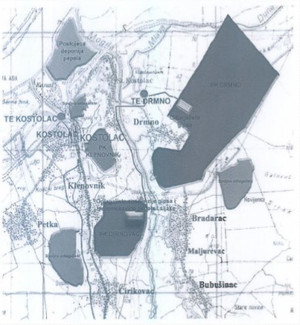Planning, industrial safety, EIA and transboundary consultation for modifications to a hazardous facility
Sub-title: Considerations of transboundary effects of industrial accidents
 |
Country: Republic of Serbia
Date: 2019
Category: Plan, Measures, Legislation
Tags: Industrial Safety, Land-Use Planning, Hazardous Activity, Transboundary Effects, Espoo Convention, Information Sharing
Organization(s) involved: Department for Major Chemical Accident Protection of the Ministry of Environment Protection
The details of this good practice can be found at:
This good practice is described under case study 5 of the presentation by the representative of the Department for Major Chemical Accident Protection of the Ministry of Environment Protection of the Republic of Serbia at the UNECE Sub-Regional Workshop on land-use planning and industrial safety for Eastern Europe and the Caucasus (22-24 May 2019, Chisinau, Republic of Moldova):
National approach to land-use-planning, siting and safety, integrated into the environmental assessment (SEA and EIA) frameworks

Sub-title: Integration of land-use planning, the siting of hazardous industrial activities and industrial safety into the strategic environmental assessment (SEA) and environmental assessment (EIA) legislative and policy framework
Country: Serbia
Date: 2016
Category: Legislation, Policies, Plans
Tags: Competent Authorities, Land-Use Planning, Industrial Safety, Decisions on the Siting of Hazardous Industrial Activities, strategic environmental assessment (SEA) and environmental assessment (EIA)
Organization(s) involved: Ministry of Agriculture and Environmental Protection, Ministry of Construction, Transport and Infrastructure, Ministry of Agriculture and Environmental Protection, Ministry of Interior
The details of this good practice can be found at:
The presentation by the Ministry of Agriculture and Environmental Protection of Serbia, at the UNECE Joint workshop on land-use planning, the siting of hazardous activities and related safety aspects (13 April 2016, Geneva, Switzerland), found here.
Interventions to spatial plans regarding industrial safety measures for planned future developments in areas with hazardous industrial activities

Sub-title: Spatial plan for areas of special purpose: Part of the environmental corridor of the Tisa River, the special nature reserve, Okanj swamp and Rusanda Nature Park
Country: Serbia (AP Vojvodina, City of Zrenjanin)
Date: 2015
Category: Policy, Plan, Measure
Tags: Land-Use Planning, Industrial Safety, Cooperation between Competent Authorities, Public Participation, Public Access to Information
Organization(s) involved: Ministry of Environmental Protection, Provincial Secretariat for Urbanism, Construction and Environmental Protection of AP Vojvodina and PE Institute for Urbanism of AP Vojvodina
The process of cooperation between the abovementioned organizations began on 19 November 2015 and ended with the official adoption of a spatial plan on 9 May 2018. The spatial plan was developed specifically for environmental protection areas. Interventions to the spatial plan were made in cooperation between the Competent Authority for major accident prevention and the Competent Authority for spatial planning. A total of three hazardous industrial activities were identified either within the borders of the spatial plan, or near its borders. Of those identified, two are defined as “upper tier” establishments and one is a “lower tier” establishment (see Seveso III Directive 2012/18/EU for the definitions). A dock with a loading station at the lower tier establishment along the Tisa riverbank was present. The “domino zone” was also identified. According to the Seveso III Directive, the domino zone is an area where establishments are sited in such a way or so close together as to increase the likelihood of major accidents or aggravate their consequences. In these zones, operators should cooperate through the exchange of appropriate information and informing the public, including neighbouring establishments that could be affected, and to establish measures in order to reduce the risk of domino effects.
The Competent Authority for major accident prevention provided information about the possible effects of major accidents in relation to the safety aspects of this spatial plan to the Competent Authority for spatial planning, based on the primary categories of effects of the dangerous substances present at the hazardous industrial activities. For the two upper tier establishments, thermal radiation from BLEVE (boiling liquid expanding vapour explosion) was noted. BLEVE is an explosion caused by the rupture of a vessel containing a pressurized liquid that has reached temperatures above its boiling point. For the lower tier establishment, the potential thermal radiation from fire and the effects on the aquatic environment were noted. The potential effects to the aquatic environment were not considered in detail for this spatial plan since such a hazard should not exist alongside the environmental corridor of the Tisa River. The fire hazard zones determined according to the results of modelling the effects of accidents were based on the value of radiated heat energy, which result in 50% lethality, 1% lethality and first degree burns. These zones are determined in order to assess the risk and analyse the consequences of chemical accidents.
The Competent Authority for major accident prevention has issued several measures for this spatial plan. For example, a ban on the construction of residential areas, public areas and areas of particular sensitivity was issued for zones of 50% lethality. Measures for emergency planning for other hazard zones were implemented. In addition, the planned new land use zones around the lower tier establishment were changed from holiday housing to industrial zones, in order to increase safety and minimise the risks to the population.
After the public consultation and public participation process, which also included operators of hazardous activities, the operator discontinued using the dock with the loading station at the lower tier hazardous establishment along the Tisa riverbank, and decommissioned it.
The details of this good practice can be found at:
Case study 2 of the presentation by the representative of the Department for Major Chemical Accident Protection of the Ministry of Environment Protection of the Republic of Serbia at the UNECE Sub-Regional Workshop on land-use planning and industrial safety for Eastern Europe and the Caucasus (22-24 May 2019, Chisinau, Republic of Moldova):
- The presentation in English can be found here
- The presentation in Russian can be found here
For information about the EIB and UNECE Information Repository of Good Practices and Lessons Learned in Land-Use Planning and Industrial Safety and to access case studies from other countries, please visit the navigation page.